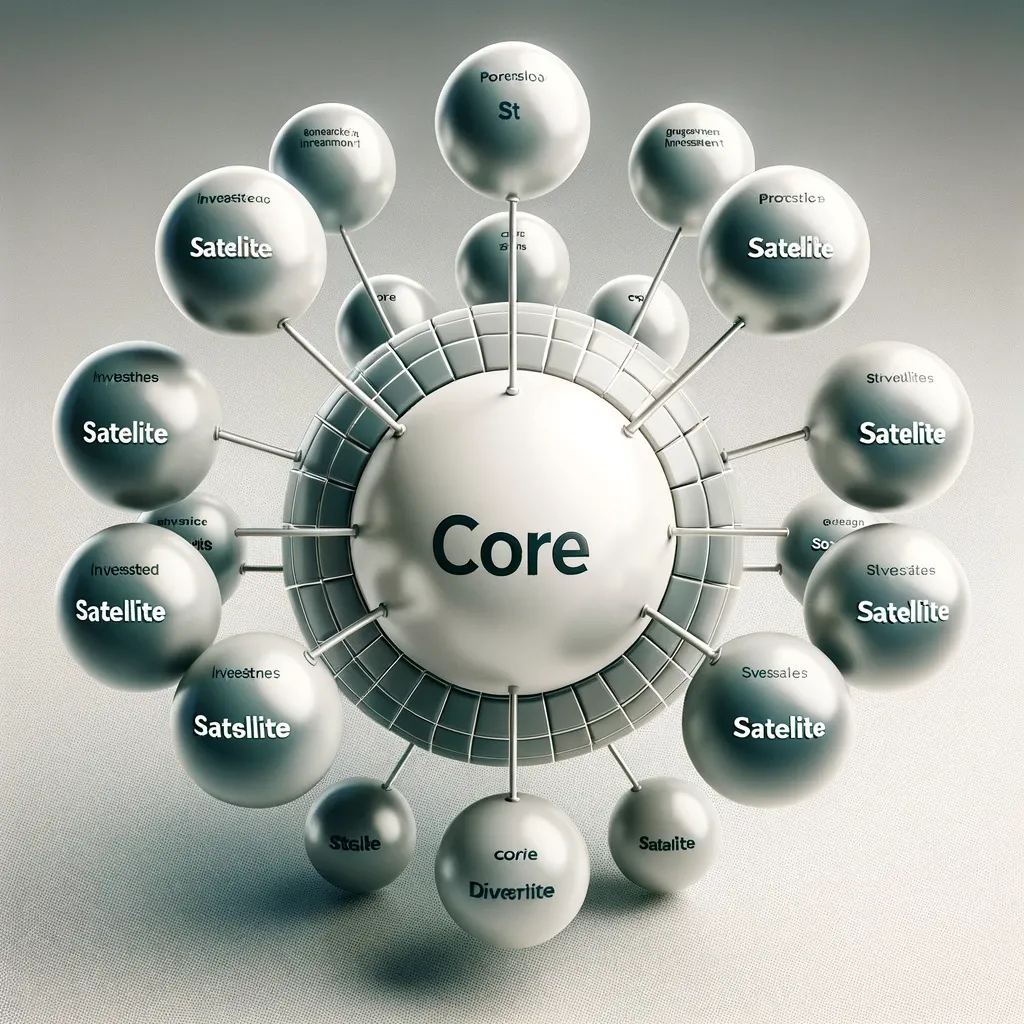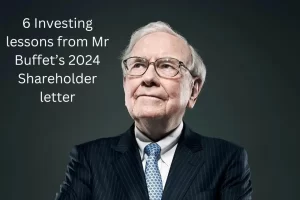0. What is the fuss?
Over time, investors in the stock market develop a style of creating their portfolio. This style varies for each investor and depends on their risk-taking ability, research, financial goals, etc. But one common thing is that the knowledge from blogs, newsletters, and social media usually influences the portfolio approach. The end game for investors remains to maximise returns by taking minimal risk.
I invest via mutual funds and individual stock picking. Over four straight years, I found my mutual funds outperforming my picked stock portfolio. This triggered me to read about mutual fund managers’ portfolio creation approach. Given mutual fund managers have an army of educated, experienced, and trained analysts to pick stocks, I always assumed their portfolio creation method would be complex and out-of-reach for retail investors like me. I couldn’t be more wrong.
In this post, I share the portfolio creation approach that mutual fund houses have used for decades to generate index-beating returns. It is simple, makes sense, and everyone can do it. Let’s get started.
1. What is this approach, and why it makes sense?
The approach is Core and Satellite. Imagine the solar system, with the sun at its core providing stability. The planets revolve around the core. Some planets take longer to make one complete rotation around the sun, and some take a shorter time.
The same concept applies to the Earth. The Earth’s core is dense and hot, providing central stability to the planet and creating gravity that keeps our atmosphere closer to the surface. The Earth’s and the moon’s relationship is the same, with the Earth at the core.
Even buildings are made similarly. The foundations are laid first, which provides stability. Then, the buildings are built on top of the foundations.
Aeroplanes and bridges are constructed similarly, where the stable structure or supporting pillars are built first, and then other connecting pieces are brought together.
Ok, so we get why the core provides stability, and satellites revolve around the core, built on top of it. But how does it relate to a winning stock portfolio creation? Well, here is why.
Why Core Portfolio?
Core provides stability to the overall portfolio. It has less volatility or beta in stock market terms. If your entire portfolio is volatile, your stress levels might go through the roof, tracking and rebalancing now and then.
Core gives you the peace of mind to stay calm and remain invested. You know that even in the worst of times, the fall in your core portfolio will be minimal. Your invested capital in the core part is relatively safe and will not evaporate overnight.
Core provides the safety net that helps make you a patient long-term investor.
Are there any downsides? Well, no, but one thing is worth mentioning. You will not double your money every month. The core portfolio is a stable, consistently growing machine. It will not fall dramatically or rise disproportionately. It will stay on the pitch for long, like Rahul Dravid (Indian Cricketer reference), and help you go for the long haul.
Now, having covered the benefits of the Core portfolio, let’s see why a satellite portfolio matters.
Why a Satellite portfolio?
As the name suggests, a satellite portfolio is a smaller part of your portfolio than the core. While the core provides stability, the satellite offers higher returns.
How does it give higher returns? By investing in high-growth stocks, which can be small-cap or mid-cap stocks. And if you are a seasoned stock picker, then some micro-cap as well.
One thing to note is the volatile nature of the satellites. When they go up, they go up too fast, too soon, sometimes giving you 50–60% in a single good bull year. And when they go down, they might fall like a brick, erasing your invested capital by as much as 30–40% over a couple of bad months.
The core part gives you the stability to make big, bold bets on satellite stocks. If you pick satellites well, you can generate index-beating returns.
Another thing to note is that satellite stocks satisfy your itch to try your hand at picking stocks. Want to bet on a rising theme, prove other naysayers wrong, discover an undiscovered but high-growth stock, then buy them as part of a satellite portfolio? Everyone has a side that wants to take risks and try to get extra returns. The satellite part is where you get to play this role.
Having covered the benefits of the core and satellite portfolio, let’s cover the key characteristics of the core and satellite part to help you build your own.
Characteristics of Core Portfolio
How much to allocate?
One should allocate 70% to the core part. Yes, the majority part of your overall portfolio should be in core. This is to provide stability, de-risk, and protect your capital.

If you have a high-risk tolerance, keep the allocation lower at 60% but never below 50%.
If you are risk-averse, you can keep it higher at 80%. Even a 100% allocation is acceptable if you are okay with index-average returns but prefer safety over anything else.
How do you pick core stocks?
This one is relatively easy. Core stocks are usually the leaders in their industry domain. They have a long history of consistently growing over time. And have at least five years of stock market history.

In the finance sector, think of the largest private sector banks out there (HDFC/ICICI/Axis/Kotak).
Think of the largest IT companies (TCS, Infosys, HCL Tech, LTIM, etc.).
The largest players in the FMCG sector are Nestle, Hindustan Unilever, and Tata Consumer Products. People will continue consuming Maggie and coffee (Nestle) and buying washing powder and bath soap (HUL). Tata Salt is also known as desh-ka-namak. With the partnership with Starbucks and acquisitions in new-age food products, Tata Consumer Products is making all the right strides towards a stronger future.
This list can go on to Infrastructure, Pharma, Chemicals, Travel & Tourism, and other sectors, but you get the idea.
Pick an industry sector you like tracking or know, and then pick among the largest five players in this sector based on consistency in performance over the last five years. Consistency is the CAGR of the top line (revenue) and bottom line (profits). An easier way is to see the 5-year earnings per Share (EPS) growth.
Bonus: My Core Portfolio screener
Below is the screener I use to get a list of stable core stocks and then research and pick from among them.
Core Portfolio Stock Picker screener
Market Capitalization > 10000 AND
Sales growth 5Years > 5 AND
Profit growth 5Years > 5 AND
OPM 5Year > 5 AND
Return on equity > 10 AND
Return over 5years >= 14 AND
Beta < 1 AND
IPO Year <= 2019 AND
PE < 100The above can be applied as is on the screener website. Other screener platforms may require some tweaking, but you get the logic. Some platforms, such as Tickertape, give you drag-and-drop filters in the screener, which makes it super easy and a zero-code effort.
Characteristics of Satellite Portfolio
How much to allocate?
A 30% allocation of your overall portfolio to satellite is ok. If you have more time to research and have been investing for a while, then increase this allocation to 40%.
You can change this allocation based on your risk appetite. However, it is advisable to allocate at most 50% to satellites. These are risky bets, and not all of them might play out.
How do you pick Satellite Stocks?
Each person has his or her own style of picking satellite stocks. Let me state some common ways of picking these.
Area of expertise
Do you work in IT, and know which IT company is doing well? Then, pick small-cap IT stocks that, according to you, have huge growth potential.

While working in this sector, you might have changed two to three jobs in IT companies. You will know the working style of these companies and which areas in IT are growing faster. Your friends and colleagues in IT will talk about their dream IT company, which company pays higher salaries, which has a better culture, and so on.
In short, you will have first-hand knowledge of the IT sector. Use it to research and pick high-growth potential IT stocks. Veteran investor Mr Warren Buffet also calls it the ‘Circle of Competence’, meaning picking stocks you know in and out and are not just guessing.
Similarly, you can be working in the Pharmaceutical, Cement, FMCG, Travel and tourism, or Insurance business. Whatever business you are in, you know insights that an average stock-picker does not. Use your unusual advantage to pick small companies with large future growth potential in your sector.
Sunrise sector companies
The Sunrise sector is where the sun is rising. It means that the development of a sector has started and will continue for many years to come. Think of electric vehicles, BioPharma, Green Energy, etc.

Companies in sunrise sectors give above-market-average growth rates and returns. They might as well grow twice the market average rate and double your money in 2–3 years as their sector explodes.
Disruptive Innovation
These companies are causing disruptive innovation, which will change the landscape of the industry in which they operate. AI companies are an example. They can change how customer service, doctor consultation, or other services are provided.
Customer-Obsessed Companies
This might seem simple, but it is not. A company obsessed with providing its customers with the best product or service it can, repeatedly, over the years, is a good bet.
It can be a B2C or B2B company. Customer obsession builds loyalty and long-term wealth generation as loyal customers spread word of mouth and spend more over time. Hospital chains, insurance providers, and Dairy Companies can be some of these sectors where such companies can be found.
B2B SaaS is another domain where customer obsession will keep the company longer in business than the absence of it.
Vijay Kedia’s framework — SMILE
I like the simple SMILE framework used by star investor Vijay Kedia to pick small and micro-cap companies.
The framework states to pick a Small sized Company with Medium Experience management (too much experience leads to being risk-averse and resistant to change too quickly). Club this with Large Aspirations and Extra-Large growth potential in terms of headroom for growth.
S: Small Sized Company
MI: Management who is Medium in Experience
L: Large aspirations
E: Extra large growth potential
There can be more strategies for picking a satellite stock. Stick to a framework you are comfortable with, and develop your style of picking satellite stocks over time.
Bonus: My Satellite Stock Screener
Below is the screener I use to get a list of satellite stocks and then research and pick from among them. This query can be applied as is on the screener site or used as filters on other platforms. Don’t worry if you don’t get all the parameter names; you can search for them on Google or simplify them per your needs. As long as you get the characteristics of satellite stocks, you can create your screener and pick stocks.
Satellite Portfolio Screener Query
Market Capitalization > 500 AND
Market Capitalization <= 10000 AND
Sales growth > 10 AND
Profit growth > 10 AND
OPM > 10 AND
Free cash flow preceding year > Free cash flow last year AND
EPS > EPS last year AND
Average return on capital employed 3Years > 15 AND
Debt to equity < 1 AND
Price to Earning < Industry PE AND
DMA 50 > DMA 200 AND
Alpha > 10Why does the Core and Satellite approach work?
The Core and Satellite approach works as the core provides stability and a certain immunity from volatility. Your portfolio will also be down when the entire stock market is down. But the core part will limit the downside.
Similarly, when the stock market is in exuberance, the core part will not rise as much, but the satellite part can make you above index returns overall.
Wealth creation is a long-term game. There are no overnight winners here. The Core and Satellite portfolio helps you go the long haul. Being in the market longer increases your chances of creating wealth more than others who dabble or do not have a structured approach.
Parting Thoughts
There is no one right approach, but there can be an above-average one. Core and Satellite portfolio creation approach is one. It might not give you the highest returns you can generate, but it will provide good enough returns without too much stress. After all, most of the major mutual fund houses abide by it.
Do note that you should not expect returns similar to those of a mutual fund. A mutual fund has access to key company management and industry research reports and can enter and exit a stock faster. It is their full-time job. But you can learn from their investing style to create a strong foundation (core) and build incrementally from there (satellites).
When I first understood the crux of this approach, I was surprised to find it so full of common sense and yet not so common among retail investors. Maybe we investors have a way of trying tough things all the time and miss out on the good returns simple investing can give. As is commonly said, simple is often not easy.
What is your approach to stock portfolio creation that has rewarded you well over time? Do share in the comments below.
Disclaimer: This post is not investment advice. Please do you research before investing.




